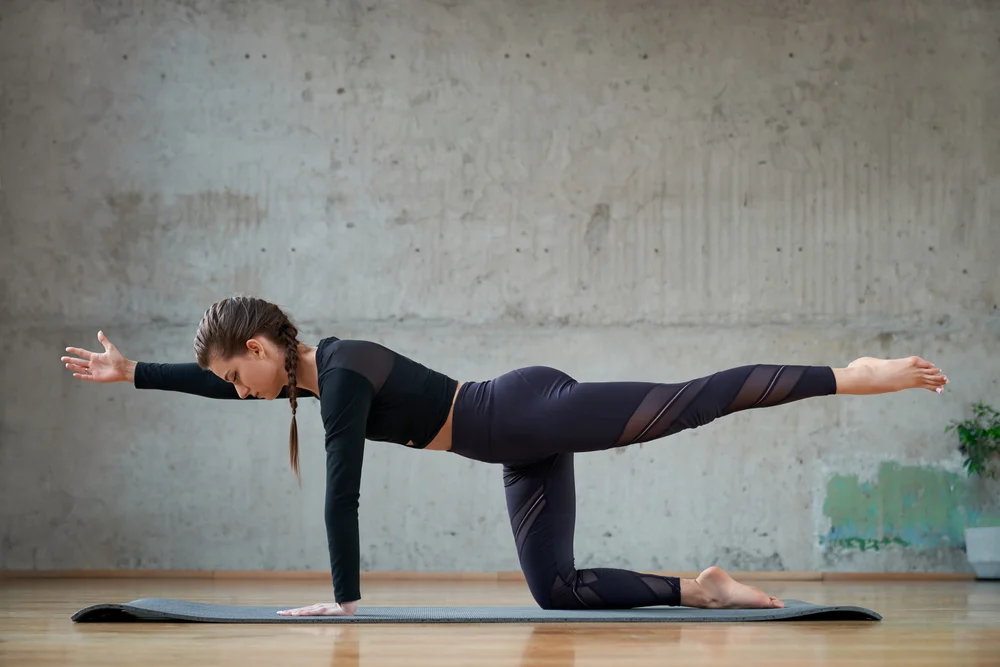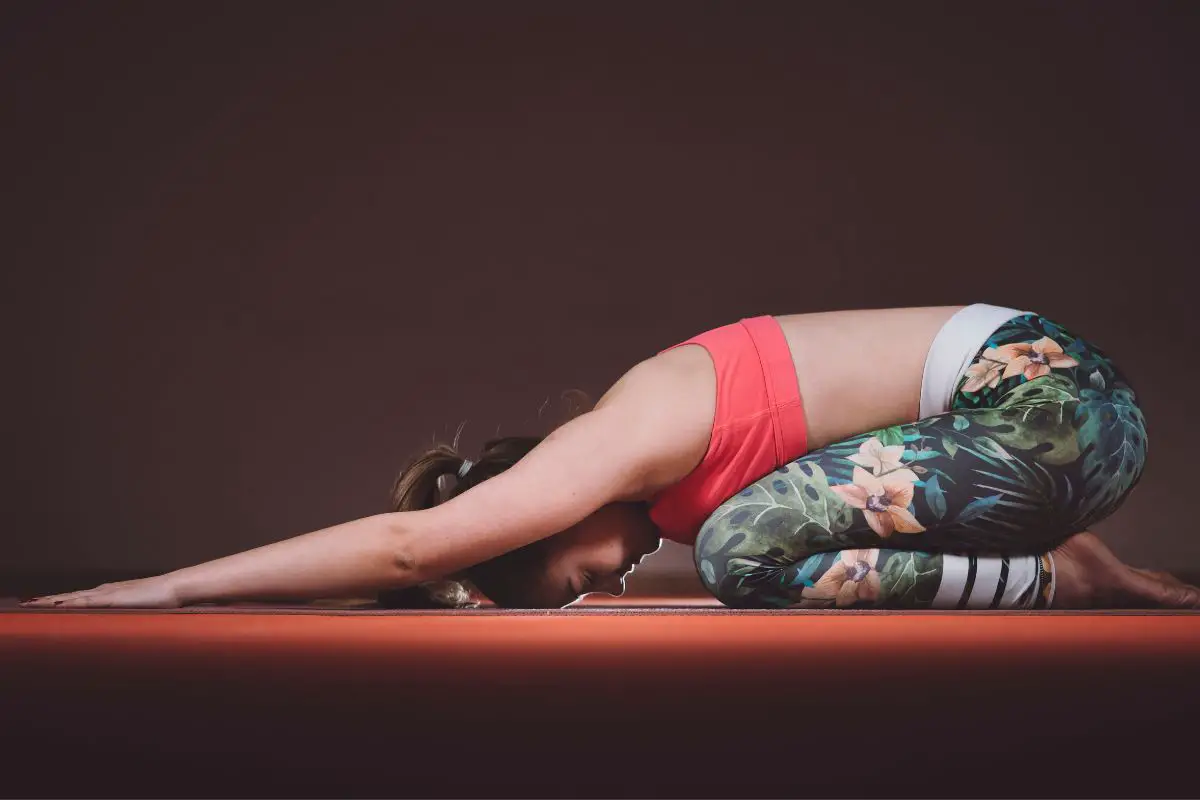Exercise

It’s increasingly more common to suffer from lower back pain, and there are a number of reasons why this pain can come about, whether it’s because of a pre-existing medical condition, or due to poor posture, either way, no one enjoys that sharp pain in your lower back when you go to move in a certain direction. So what can you do about it?
Aside from trying to correct whatever underlying condition or issue is causing your lower back pain, in the meantime, you can try out some lower back exercises and stretches, which should help to improvise the mobility and motion of your lumbar.
So, if you want a guide to some of the best stretches and exercises to try out in order to help your lower back pain, then read on, and we’ll provide you with all of the information you need to know!
What Is Lumbar Motion?
The lumbar region of the spine refers to the lower back, and lumbar motion refers to the movement that occurs in this part of the spine.
The lumbar spine is made up of five vertebrae, and it is responsible for bearing much of the weight of the upper body.
It is also the area of the spine that is most susceptible to injury and pain, due to the combination of weight-bearing and the range of motion it allows.
Lumbar motion includes flexion and extension, lateral flexion (bending to the side), and rotation.
Flexion refers to the movement of the spine forward, while the extension is the opposite movement of the spine backward.
Lateral flexion involves bending the spine to the side, and rotation refers to the twisting or turning of the spine.
These movements allow the lumbar spine to be flexible and adaptable, allowing us to perform various activities.
However, excessive or improper lumbar motion can lead to pain and injury.
It is important to maintain good posture and use proper technique when lifting or performing other activities that involve the lumbar spine, to avoid strain or damage.
It is also important to engage in regular physical activity and stretches to maintain the flexibility and strength of the lumbar region.
Why Is Good Lumbar Motion Important?
Good lumbar motion is important for a number of reasons.
First, it allows for a full range of motion in the lower back, which is necessary for many activities, including bending, twisting, and lifting.
This is important for maintaining flexibility and mobility, which is essential for overall physical health and well-being.
Second, good lumbar motion can help prevent pain and injury. When the lumbar spine is properly aligned and has a full range of motion, it is better able to bear weight and withstand the stresses of everyday activities.
On the other hand, if the lumbar spine is misaligned or lacks flexibility, it can become strained or damaged, leading to pain and other problems.
Finally, good lumbar motion is important for maintaining good posture.
The lumbar spine plays a crucial role in maintaining an upright position, and when it is not functioning properly, it can lead to poor posture and other problems.
By maintaining good lumbar motion, you can help ensure that your spine is properly aligned and able to support your body in an upright position.
Best Lower Back Mobility Exercises To Increase Lumbar Motion
So, now that you understand more about what lumbar motion is, and why it’s important, we can now take a look at some exercises that can help increase your lumbar motion.
It is worth noting however that a lot of these exercises require you to have room to lie down in order to complete them, so you’ll want to make sure that you have an unobstructed area where you can lie down comfortably in order to safely complete these exercises.
So, with this in mind, here are a few exercises that can help increase lumbar motion and improve mobility in the lower back:
Cat-Cow Stretch
This first stretch is a popular one, and there’s a good chance you’ll recognize it when you first begin to do it.
This stretch involves starting on all fours with a flat back and then rounding the spine and tucking the chin towards the chest (the “cat” position).
Then, arch the back and lift the head towards the ceiling (the “cow” position). Repeat this movement several times.
This stretch might seem basic at first, but it’s an extremely effective way to increase your lumbar motion!
Lumbar Rotation Stretch
If you find that your lumbar motion feels restricted, and certain twists and turns lead to sharp pain, then this is definitely a stretch you’ll want to include in your routine.
However, it’s advisable to take it slowly at first in order to prevent you from injuring yourself.
Lie on your back with your knees bent and feet flat on the ground. Slowly let your knees fall to one side, keeping the opposite shoulder on the ground.
Hold for a few seconds and then slowly bring your knees back to the center and repeat on the other side.
Hamstring Stretch
This stretch is excellent not only for increasing your lumbar motion, but also for your overall flexibility, especially in your hips.
In order to complete this exercise, begin by sitting on the ground with one leg extended and the other bent with the foot against the inner thigh of the extended leg.
Lean forward and reach towards the toes of the extended leg, keeping the back straight. Hold for a few seconds and then switch legs.
Child’s Pose

This stretch is a particularly easy one, so if you’re unsure of what stretches you should start with, then this might be a good one to try out first, especially if your lumbar motion range is especially low.
To complete this exercise, start on all fours and then lower your hips back towards your heels, stretching your arms in front of you.
Hold this position for a few seconds and then come back up to all fours.
Bird Dog
Another great exercise that you can add to your routine stretching is the bird dog, and although this might sound like a weird name for a stretch, we can assure you that it is great at increasing your lumbar motion.
For this exercise, you’ll want to start on all fours with a flat back. Lift one arm and the opposite leg off the ground, keeping the back and neck straight.
Hold for a few seconds and then lower back down and repeat on the other side.
Leg Lift
This exercise is as simple as it sounds, and if you’re unsure of whether your technique for other stretches is correct or not, then you can always revert back to this exercise in order to help increase your lumbar motion.
In order to complete this exercise, you’ll want to begin by lying on your back with your arms at your sides and your legs straight.
Then, lift one leg off the ground, keeping it straight, and hold for a few seconds. Lower it back down and repeat with the other leg.
Lumbar Extension
This stretch is a little more difficult to get right, especially if you’ve only just begun doing lumbar-focused stretches, so it might be one for you to try as your lumbar motion increases slightly.
If you want to try this exercise out for yourself, lie on your stomach with your arms at your sides. Lift your head, chest, and arms off the ground, keeping your hips and legs on the ground.
Hold for a few seconds and then lower back down.
Lumbar Flexion
Another exercise that requires a little bit more core strength and lumbar motion than the others, the lumbar flexion stretch is an incredibly effective stretch, but only if you ensure you have proper technique, so if you don’t feel comfortable doing it, try something else!
If you want to give this exercise a try, then you need to begin by lying on your back with your knees bent and feet flat on the ground.
Lift your hips off the ground, using your abdominal muscles, and hold for a few seconds. Lower back down and repeat.
Conclusion
We hope you’ve enjoyed this guide to some of the top lower back mobility exercises that you can do at home, all of which should be able to help increase your lumbar motion and get rid of any lower back pain you might be experiencing!
It’s important to consult with a healthcare provider or physical therapist before starting any new exercise program, especially if you have any existing health conditions or injuries.
They can help you determine the best exercises for your specific needs and ensure that you are performing them safely and correctly.
Thanks for reading!





